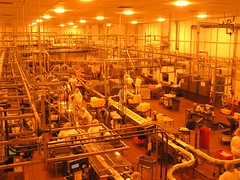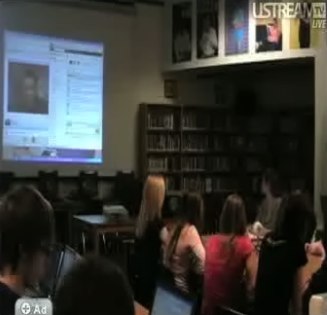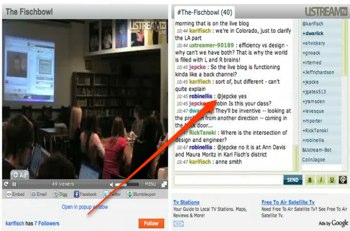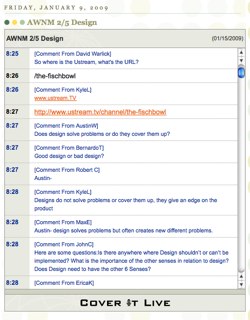J.D. Wilson commented on yesterday’s blog post, Should it Matter? and he got me thinking about several things. Here is the first paragraph of his comment.
What concerns me as a high school teacher is getting the content into the class. I think the tools the new technology offers are impressive and do enable me to expand the boundaries of my class room. But I have difficulty with those that think the technology by itself is going to make a subject interesting. It is like trying to get someone who does not like baseball to like baseball by changing the rules of baseball to make the game look more like football…
Ditto! Technology, by itself, will not help, and I think that his comparison with sports rules is very effective.
I often ask teachers who are seeing new excitement and increased learning gains, when they start using something like blogging, “What do you think is the reason that your students are doing so much better?” ..and I often (almost always) hear, “It’s because ‘It’s Technology.'”
Now I have not been in these classrooms and haven’t seen the students working, but I can’t help but feel that this is not the true reason. First of all, it isn’t technology to our students. There’s nothing special about blogging or working with simulations to them. Participating in large, ongoing, and nearly always available conversations, and playing with simulations is a part of their childhood. It’s part of their culture.
We are just now starting to pay attention and to understand some of what our students are doing, but it still looks like technology to us. We see the machines, because we’re looking in from the outside. To them, it’s the information.
I think that it has a lot more to do with what they are doing with the technology — and more than that, it’s what they are doing with the information.
It is what it is and must be appreciated on its own terms. Students who dislike Chaucer (I am an English teacher) are not going to like Chaucer just because he is being studied using social networking tools. I struggle with maintaining the rigor while trying to make the material as interesting as I can.
I agree that Chaucer is not going to come to life just because students are using social networking tools. However, he may come to life, become relevant to their world view, and even become enjoyable because of the conversations that are having in the social networking tools.
For instance, you might ask them to share comebacks from the fellow travelers Chaucer wrote about (sometimes insultingly). What might that lazy cook have said back to Chaucer, if he’d been able to read and write. Show students the Where the Hell is Matt (2008) video and ask them how what Matthew Harding did is like what Chaucer was doing. How might Matthew Express his travels without a video camera and with the Internet? Find other traveling bloggers and find comparison, or ask students to find comparisons.
I can’t really give a good example, because I’ve never taught Chaucer. But if reading his work was not useful or interesting to someone, we wouldn’t be teaching it. I’m convinced that if we can include our students voices in the conversations, causing them to invest themselves in the study, then Chaucer becomes something else.
I agree that a teacher cannot do any more than the community in which she or he teaches will accept and most communities seem to be more interested in talking about reform than in doing the very hard work that reform requires. I think as a culture we have bought into the idea that there are simple solutions to every problem and that is rarely true.
This is so true. It’s not that generating the big ideas is easy. It isn’t. It requires that we get out of our boxes and look back in with different lenses. But we’ve become very good at saying things like, “Learning is conversation,” and “Students will learn better through networks of other learners.” The question now is, “What does that look like?” “What exactly are you seeing when when this is happening?”
Right now I’m sifting through the comments posted during a session I did at Educon, where I asked participants to share examples of information-rich learning activities, and many of the answers were brilliant. But very few of them truly painted a picture of what students and teachers are actually doing.
We need to start doing a much better job of visualizing and describing what learning 2.0 actually looks like.
It is my experience that modern education is becoming more about documenting what we do than about doing anything. I think the definition of a public school teacher is becoming someone who documents in great detail what they would do if they had time to teach.
This is brilliantly said, J.D.. It reminds me of something that Yong Zhao said when I saw him speak a few weeks ago. He said something like, “We seem much more interested in doing ‘it’ right, than doing the right thing.”
However, I do not think that simply getting rid of the documenting — the testing — is going to be enough. We need to have something to replace it with, something that is complex, but can be described simply and compellingly.
Thanks!
Now I have to rush to the gate. I’m in the Pittsburgh airport, and it’s a lively place!

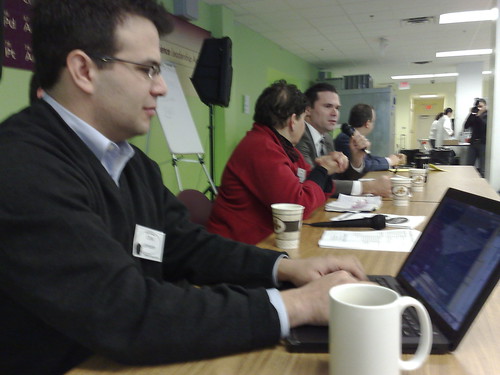


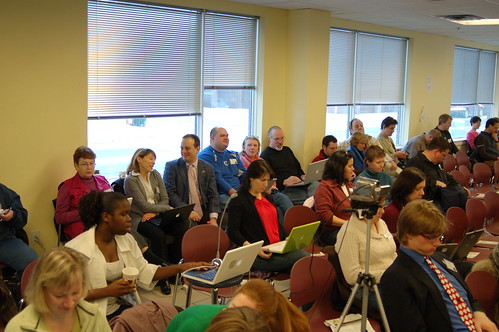
 I had an amazing conversation last night, with
I had an amazing conversation last night, with 



